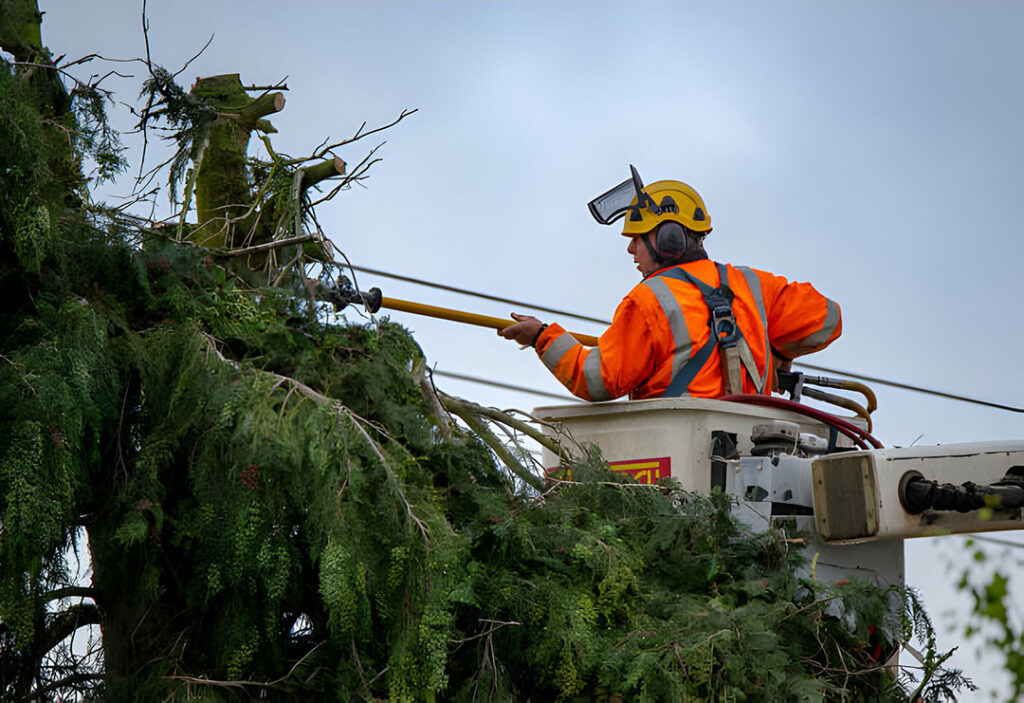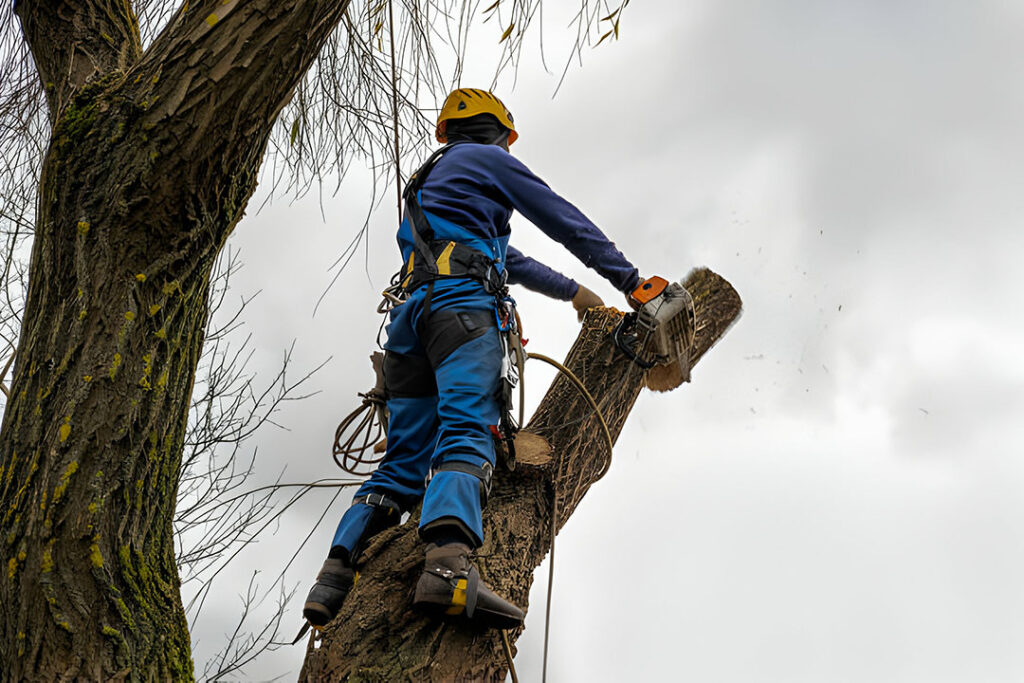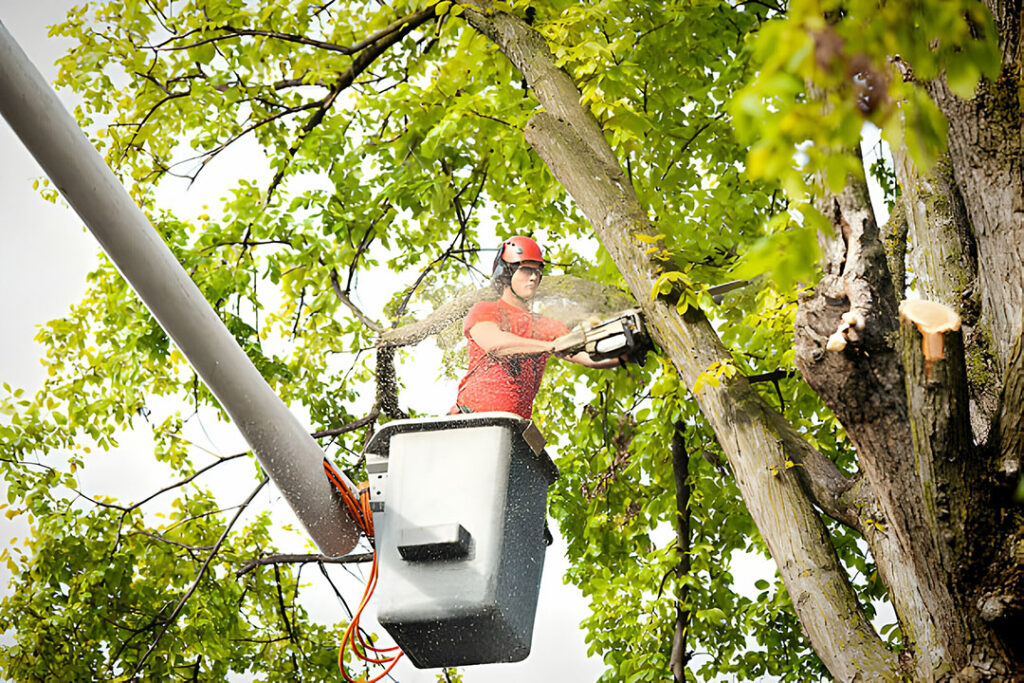Hiring the Best Tree Service Boulder

If you’re searching for the perfect tree service in Boulder, look no further! Hiring the best tree service is like finding a needle in a haystack, but we’re here to make it easy for you. With a second-person point of view, we’ll guide you through finding the ideal tree service that meets all your needs. From their reputation and reviews to the services they offer, we’ll cover it all. We’ll also highlight the importance of qualifications and experience when deciding. So, let us be your trusty companion in this quest for the best tree service in Boulder.
Reputation and Reviews
One important aspect to consider when hiring a tree service in Boulder is to check their online reviews and reputation. This step is crucial in order to ensure that you are hiring a trustworthy and reliable company. Take the time to read through the reviews left by previous customers. Look for patterns in the feedback, both positive and negative. Pay attention to how the company responds to negative reviews, as this can be a reflection of their customer service skills. Additionally, check if the company has any certifications or affiliations with professional organizations. This can give you further reassurance that they are qualified and knowledgeable in their field. Don’t be afraid to ask for references as well. A reputable tree service will be more than happy to provide you with a list of satisfied customers. By doing your due diligence and thoroughly researching the reputation and reviews of a tree service in Boulder, you can make an informed decision and hire the best company for your needs.
Services Offered
When hiring the best tree service in Boulder, it is important to consider the range of services they offer. You want to ensure that the company you choose can handle all of your tree care needs. Look for a tree service that offers a comprehensive list of services, including tree pruning, tree removal, stump grinding, and tree planting. Pruning is essential to maintain the health and appearance of your trees, while tree removal may be necessary if a tree is diseased, damaged, or posing a safety risk. Stump grinding is important to remove unsightly stumps and prevent the growth of new shoots. Additionally, tree planting services are valuable if you want to add new trees to your property. It is also worth considering if the tree service offers emergency tree removal in case of storm damage or fallen trees. By choosing a tree service that offers a wide range of services, you can have peace of mind knowing that they have the expertise and equipment to handle any tree-related issue that may arise.
Qualifications and Experience
To ensure you hire the best tree service in Boulder, it is essential to consider their qualifications and experience. When evaluating potential tree service companies, one of the first things you should look at is their qualifications. Make sure they have the necessary licenses and certifications required by the state and local authorities. This ensures that they have met the necessary standards and regulations for safely and effectively carrying out tree care services. Additionally, it is important to consider the experience of the tree service company. Find out how long they have been in business and how many similar projects they have successfully completed. A company with years of experience will have the knowledge and expertise to handle any tree-related issue that may arise. They will also be equipped with the right tools and equipment to perform the job efficiently and safely. By hiring a tree service company with the right qualifications and experience, you can have peace of mind knowing that your trees are in capable hands.
Read more https://www.bouldertreeservices.net
In Need of Tree Care? Hiring a Trusted Tree Service Boulder

Are your trees looking a little worse for wear? In need of some professional tree care? Look no further than a trusted tree service in Boulder. When it comes to maintaining the health and beauty of your trees, hiring a professional can make all the difference. A reputable tree service has the expertise and equipment needed to tackle any tree-related issue you may be facing. They’ve got you covered from pruning and trimming to tree removal and stump grinding. Don’t risk your property’s safety or your trees’ health by attempting DIY tree care. Instead, rely on a trusted tree service in Boulder to do the job right.
Importance of Hiring a Trusted Tree Service
When you need tree care, it’s essential to hire a trusted tree service for the job. Taking care of trees is no easy task, and it requires knowledge, experience, and the right equipment. A trusted tree service will have certified arborists who understand the needs of different tree species and can provide expert care. They will also have the necessary tools and equipment to handle tree removal, pruning, and other tree care tasks safely and efficiently.
One of the main reasons why it’s important to hire a trusted tree service is for the safety of your property and loved ones. Tree care can be dangerous, especially when dealing with large trees or those located near power lines or structures. A trusted tree service will have the expertise to assess potential risks and take the necessary precautions to prevent accidents.
Additionally, a trusted tree service will also have proper insurance coverage. This is crucial because accidents can happen, and you don’t want to be held liable for any damages or injuries that may occur during tree care. By hiring a trusted tree service with insurance, you can have peace of mind knowing that you are protected.
Benefits of Hiring a Professional Tree Care Company
To fully understand the benefits of hiring a professional tree care company, it is important to recognize the invaluable expertise and specialized equipment they bring to the task at hand. Professional tree care companies have trained and experienced arborists who possess deep knowledge about tree health, diseases, and proper maintenance techniques. They can accurately assess the condition of your trees and provide the necessary care and treatments to ensure their longevity.
One of the major advantages of hiring a professional tree care company is the access to specialized equipment. These companies have state-of-the-art tools and machinery that are specifically designed for tree care tasks. From pruning and trimming to tree removal and stump grinding, they have the right equipment to handle any job safely and efficiently. This not only saves you time and effort but also minimizes the risk of accidents or damage to your property.
Furthermore, professional tree care companies prioritize safety in their work. They are trained to identify potential hazards and take appropriate measures to mitigate them. Whether it’s working at heights or handling heavy branches, they have the expertise and equipment to carry out the job without compromising safety. Hiring professionals ensures that the tree care work is done in a controlled and secure manner.
In addition, hiring a professional tree care company can save you money in the long run. Regular maintenance and care can prevent costly damages caused by falling branches or unhealthy trees. Professional arborists can identify and address issues early on, saving you from expensive tree removal or property repairs in the future.
Tips for Finding the Best Tree Service in Boulder
To find the best tree service in Boulder, you should consider asking for recommendations from local neighbors and friends who have recently used one. Word-of-mouth referrals can be a valuable source of information, as you can trust the opinions of people you know and who have firsthand experience with a particular tree service. They can provide insights into the quality of work, professionalism, and reliability of the service provider.
In addition to seeking recommendations, you should also conduct your own research. Take the time to read online reviews and check the ratings of different tree service companies in Boulder. Websites like Yelp and Google Reviews can be helpful in providing unbiased feedback from previous customers. Pay attention to both positive and negative reviews to get a balanced perspective.
When evaluating tree service providers, it’s important to consider their qualifications and credentials. Look for companies that are licensed, insured, and certified by reputable organizations. This ensures that they have the necessary expertise and knowledge to handle tree care tasks safely and efficiently.
Furthermore, it’s advisable to get multiple quotes from different tree service companies. This allows you to compare prices, services offered, and the overall value for money. However, be wary of extremely low prices, as they may indicate subpar quality of work or hidden costs.
Check tree service boulder for more information.
Looking for Experienced Tree Removal Boulder Specialists

Looking for experienced tree removal Boulder specialists? You’re in luck! When it comes to removing trees from your property, it’s essential to find professionals who know what they’re doing. With their expertise, they can ensure a safe and efficient removal process, leaving your landscape looking pristine. But with so many options out there, how do you choose the right specialists for the job? In this short guide, we’ll explore the benefits of hiring experienced tree removal professionals and provide you with essential factors to consider during your search. Plus, we’ll share some tips on how to find the best tree removal specialists in Boulder. So, let’s get started and find the experts who can meet your tree removal needs.
Benefits of Hiring Experienced Tree Removal Specialists
When hiring experienced tree removal specialists, you can expect numerous benefits that come with their expertise. Firstly, these professionals have the knowledge and skills to assess the condition of trees and determine the best course of action. They can identify potential hazards and take appropriate measures to ensure the safety of your property and those around it. Additionally, their experience allows them to efficiently and effectively remove trees, minimizing damage to surrounding structures and landscapes. They have the necessary tools and equipment to handle any job, no matter how big or small. This saves you time and effort in trying to do it yourself or hiring inexperienced individuals. Moreover, experienced tree removal specialists are well-versed in local regulations and guidelines regarding tree removal. They can help you navigate through the necessary permits and ensure that the job is done in compliance with the law. Lastly, hiring professionals gives you peace of mind, knowing that the job will be done right the first time. With their expertise, you can trust that your tree removal needs will be met with utmost professionalism and care.
Factors to Consider When Choosing Tree Removal Professionals
To choose the right tree removal professionals, consider these key factors. First and foremost, you need to ensure that the professionals you hire are licensed and insured. This is crucial for your own protection and to avoid any potential liability in case of accidents or damages during the tree removal process. Additionally, experience is an important factor to consider. Look for professionals who have been in the industry for a significant amount of time and have a track record of successfully completing similar projects. It’s also important to check for references or read reviews from previous clients to get an idea of their reputation and the quality of their work. Another factor to consider is the equipment and techniques used by the professionals. Make sure they have the necessary tools and expertise to safely and efficiently remove the trees without causing any harm to your property or surrounding structures. Lastly, consider the cost of the services. While it’s important to find professionals within your budget, be cautious of extremely low prices, as they may indicate a lack of experience or poor quality work. By taking these factors into account, you can make an informed decision and choose the right tree removal professionals for your needs.
How to Find the Best Tree Removal Specialists in Boulder
If you’re searching for top-notch tree removal specialists in Boulder, look no further. Finding the best professionals to handle your tree removal needs is crucial for the safety and health of your property. Here are some tips to help you find the right tree removal specialists in Boulder.
First and foremost, it is essential to look for experienced professionals. Tree removal can be a complex and dangerous task, so you want to make sure that the specialists you hire have the necessary expertise to handle the job safely and efficiently. Look for companies that have been in the business for a significant amount of time and have a track record of successful tree removal projects.
Another important factor to consider is certification and insurance. Make sure the tree removal specialists you choose are certified by reputable organizations and have the proper insurance coverage. This will protect you from any liability in case of accidents or damages during the tree removal process.
Additionally, consider asking for recommendations from friends, neighbors, or local community groups. Word-of-mouth referrals can be a great way to find reliable and trustworthy tree removal specialists. You can also check online reviews and ratings to get an idea of the quality of services provided by different companies.
Lastly, don’t forget to get multiple quotes before making a final decision. This will allow you to compare prices and services offered by different specialists and choose the one that best fits your budget and requirements.